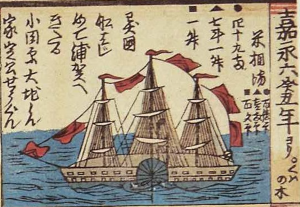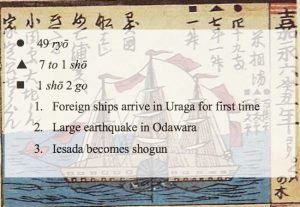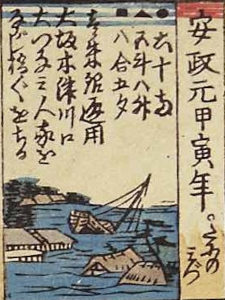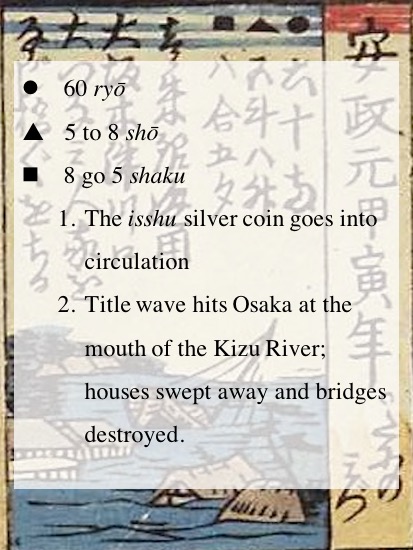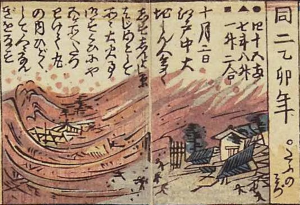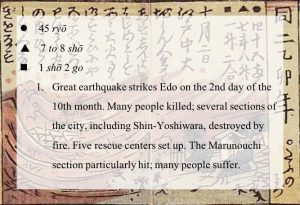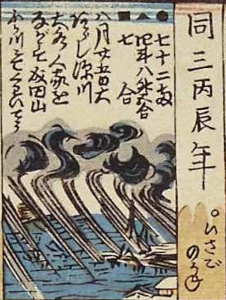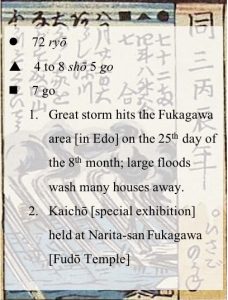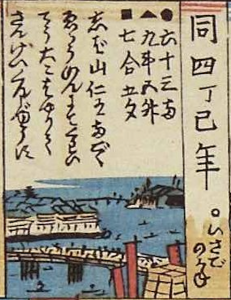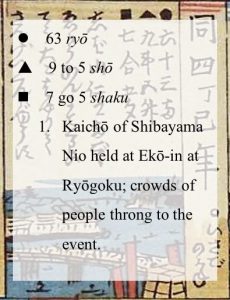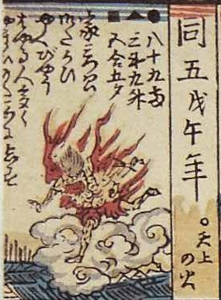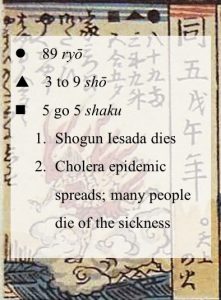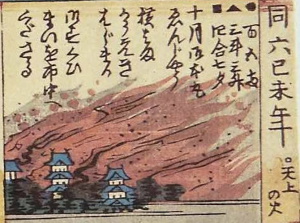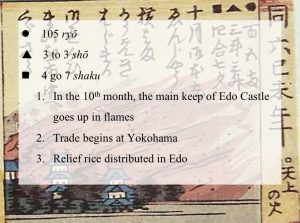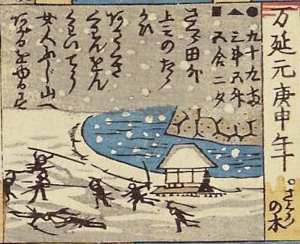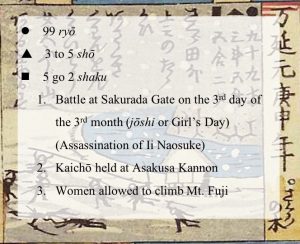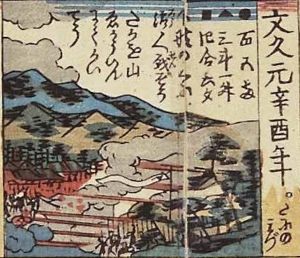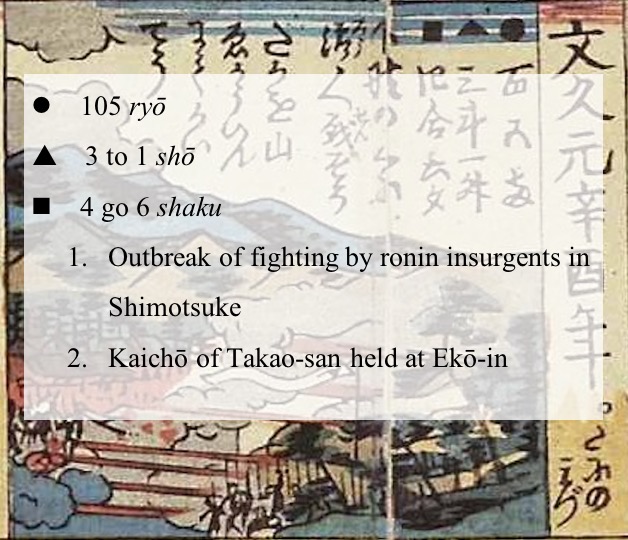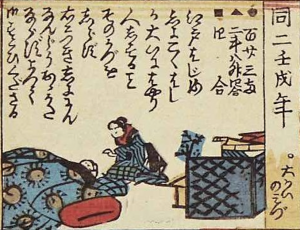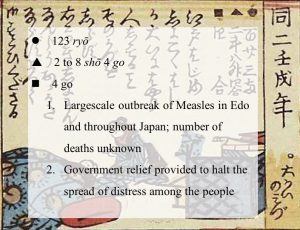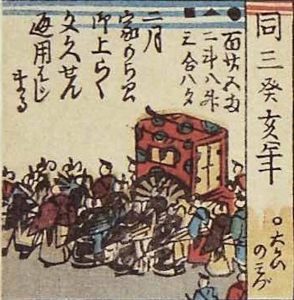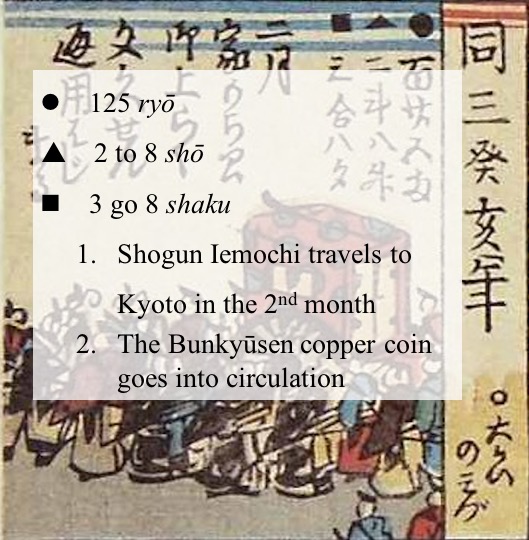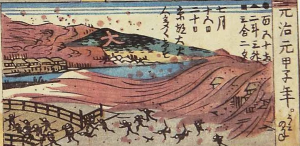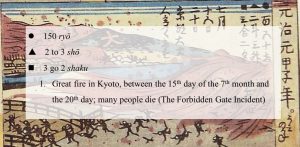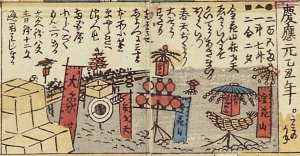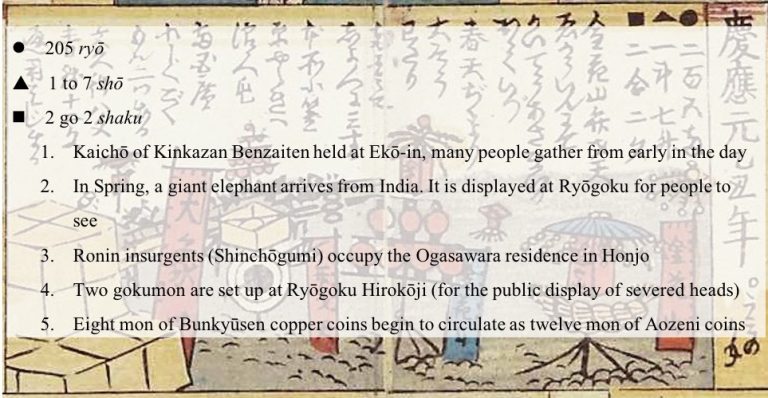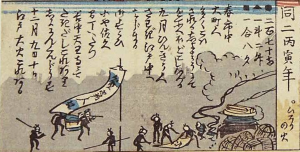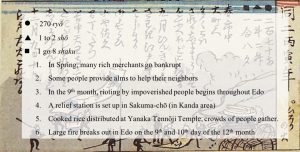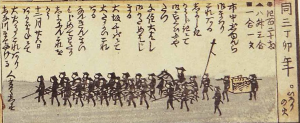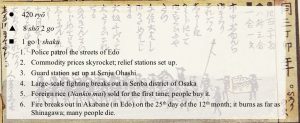M. William Steele
International Christian University

Figure 1: Anonymous, “A Compendium of Events and Record of the Rice Market from 1853 to 1868” (Ka’ei nenkan yori bei sōba nedan narabi ni nendaiki kakinuki daishinpan), n.d., but perhaps mid-1868. Source: Hachiro Yuasa Memorial Museum, ICU, Poking Fun, p. 7 (Click to enlarge, or see full size image here).
Click here to read M. William Steele’s Visual Essay analyzing this document.
The mid-1868 woodblock print above, entitled “A Compendium of Events and Record of the Rice Market from 1853 to 1868” (Ka’ei nenkan yori bei sōba nedan narabi ni nendaiki kakinuki daishinpan), chronicles the years leading to the collapse of the Tokugawa bakufu. The print is divided into 16 panels or boxes. Each box contains particulars about the year on a right side panel: the era name (nengo), the year number, the name of the corresponding sexagenary cyclic year (kanshi), and its horoscope (natchin). The main panel features a visual depiction of one event that serves to characterize the year, rice market data for the year (a key is included in the first panel) and text listing major events for that particular year.
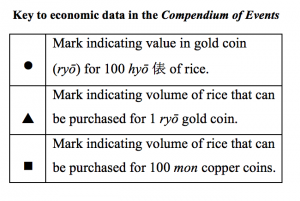
Conversions: A bale (hyō) of rice varied in volume according to time and place; in Edo in the 1850s and 1860s, it was just under one-half koku of rice.
1 koku (石) = 10 to (斗) = 100 shō (升) =1000 go (合) = 10,000 shaku (勺) =180 liters.
In the early 1850s, 4000 copper mon (文) coins were set to equal 1 gold ryō (両), but copper coins were steadily devalued; by 1866, 7000 mon equaled 1 ryō.
Translation
Panels proceed horizontally starting from the top right corner to the left, top to bottom. Click the image to enlarge.
About the Author
 M. William Steele is Professor Emeritus at the International Christian University in Tokyo, Japan. He specializes in the social and cultural history of Japan in the late nineteenth century. He is author of Alternative Narratives in Modern Japanese History (2003). His recent publications focus on mobility and environmental issues, including the role played by natural disasters in modernizing Japan.
M. William Steele is Professor Emeritus at the International Christian University in Tokyo, Japan. He specializes in the social and cultural history of Japan in the late nineteenth century. He is author of Alternative Narratives in Modern Japanese History (2003). His recent publications focus on mobility and environmental issues, including the role played by natural disasters in modernizing Japan.
 Faculty of Art
Faculty of Art